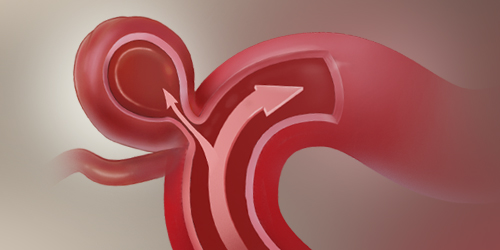
Brain aneurysms gained public attention in January with the news that rapper and music executive Dr. Dre is recovering from such a condition. An aneurysm is a balloon-like bulge of an artery wall. A ruptured aneurysm releases blood into the space around the brain, potentially causing a life-threatening type of stroke called a subarachnoid hemorrhage.
However, the vast majority of aneurysms are silent, meaning they have no symptoms until they rupture. It is impossible to predict if and when an aneurysm may rupture, but when they do, it can cause major disability and be fatal in 40% of people. Each year, Mayfield Brain & Spine neurosurgeons treat approximately 350 people with unruptured brain aneurysms.

“You don’t have to be a celebrity to be vulnerable to brain aneurysms and strokes,” said Mayfield neurosurgeon Ryan Tackla, MD. “There have been significant advances in how we can detect, prevent and treat these events, but the most important thing is to be aware of the signs and to maintain a healthy lifestyle. Mayfield stands ready to help.”
Most aneurysms don’t have symptoms until they rupture. Rupture usually occurs while a person is active rather than asleep. If you experience symptoms, call 911 immediately!
Symptoms of an unruptured aneurysm include:
- Double vision
- Dilated pupils
- Pain above and behind the eye
- Newly unexplained headaches (rare)
Symptoms of a ruptured aneurysm include:
- Sudden onset of a severe headache
- Nausea and vomiting
- A stiff neck or transient loss of vision or consciousness
February is American Heart Month and a good opportunity to learn about potential cardiovascular health risks. Make sure to share the symptoms of an aneurysm with your loved ones.
Mayfield offers opportunities to learn more:
- Check out our “Family Guide to Aneurysm Screening.”
- Sign up for “The heart-brain connection” webinar led by Mayfield neurosurgeon Dr. Andrew Ringer on March 9, part of the Mayfield Education & Research Foundation’s Brain Talks series.